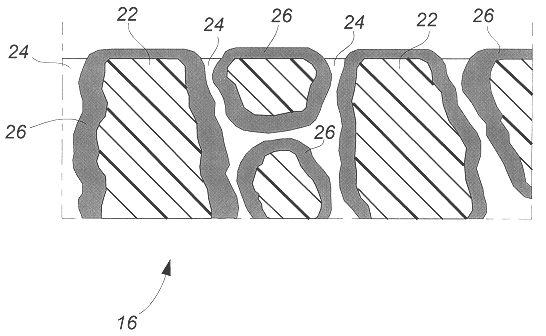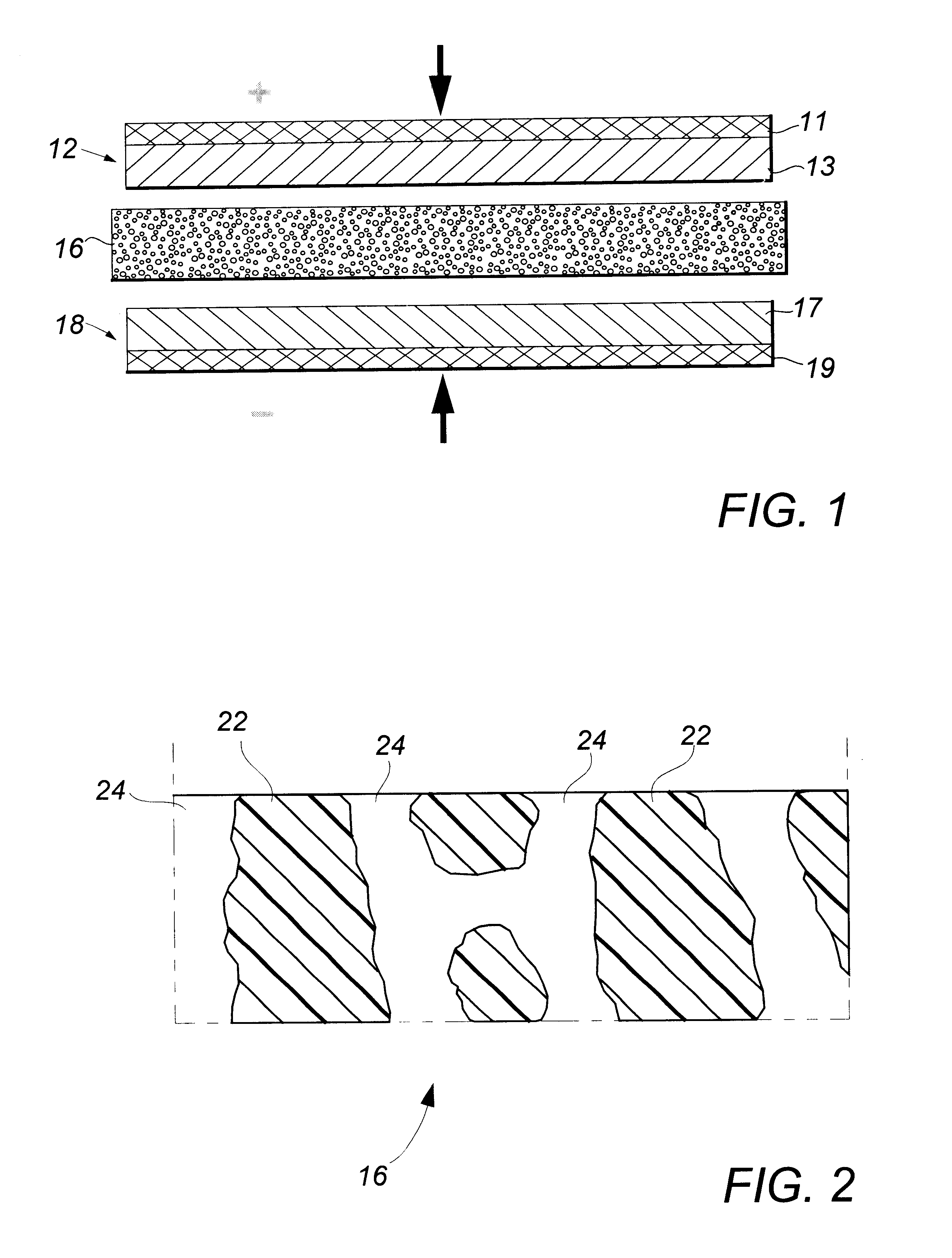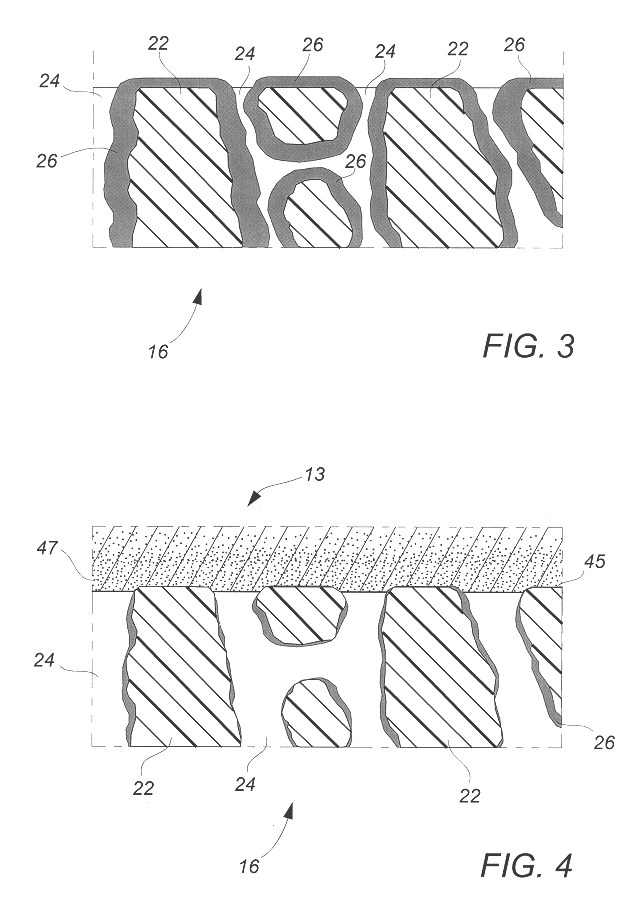Flat, bonded-electrode rechargeable electrochemical cell and method of making same
- Summary
- Abstract
- Description
- Claims
- Application Information
AI Technical Summary
Benefits of technology
Problems solved by technology
Method used
Image
Examples
example i
Preparation of Polymeric Matrix Positive Electrode
A composition of 79 g of finely divided, commercial-grade LiCoO.sub.2, 6.5 g of PVdF-hexafluoropropylene (PVdF-HFP) copolymer (Kynar PowerFLEX LBG, Elf Atochem NA), 3.5 g of Super P conductive carbon (MMM Carbon, Belgium), 11 g of propylene carbonate (PC) plasticizer (Aldrich), and 90 g acetone (J. T. Baker) was mixed in an hermetically sealed vessel for 1 hour at about 45.degree. C. After additional homogenization in a laboratory blender, the resulting paste was cast on a polyester carrier film using a doctor-blade apparatus gapped at about 0.3 mm. The acetone was evaporated in a stream of warm air and the resulting self-supporting electrode composition layer was removed from the carrier. A section of the layer was laminated with a similarly sized section of expanded aluminum foil grid (MicroGrid, Delker Corp.), which had been pretreated as disclosed in U.S. Pat. No. 5,840,087, using a heated double-roll laminator at a temperature o...
example ii
Preparation of Polymeric Matrix Negative Electrode
A mixture of 72 g of MCMB 25-28 microbead mesophase artificial graphite (Osaka Gas Co., Japan), 7.5 g of PVdF-HFP copolymer (Kynar PowerFLEX LBG), 2.5 g of Super P conductive carbon, 18 g of PC plasticizer, and 70 g of acetone was processed as set forth in Example I. A section of the formed electrode membrane was laminated with a similarly sized section of expanded copper foil grid (MicroGrid, Delker Corp.) using a heated double-roll laminator at a temperature of about 135.degree. C. As alternative embodiments, the copper grid may be embedded between two electrode membranes or foil may be coated with an electrode paste in the manner described in Example I. An alternative negative electrode member prepared in the foregoing manner from a mixture of 90 g of MCMB 25-28 microbead graphite, 7 g of PVdF polymer, and 3 g of Super P carbon provided comparable results in the following cell fabrications.
example iii
Preparation of a Microporous Polyolefin Separator Member
A commercially available, three-layer, 25-.mu.m-thick Celgard 2300 microporous polyolefin separator membrane material was cut slightly larger in lateral dimensions than electrode members of Examples I and II to ensure complete electrical insulation between those members and was immersed for a few seconds in a 18% v / v solution of propylene carbonate (PC) plasticizer in methanol. Excess solution was allowed to drip from the sample which was then air-dried for several minutes to remove the methanol vehicle and deposit the PC on the surface and within the pores of the membrane without compromising the porous membrane structure.
PUM
| Property | Measurement | Unit |
|---|---|---|
| Temperature | aaaaa | aaaaa |
| Pressure | aaaaa | aaaaa |
| Adhesivity | aaaaa | aaaaa |
Abstract
Description
Claims
Application Information
 Login to View More
Login to View More - R&D
- Intellectual Property
- Life Sciences
- Materials
- Tech Scout
- Unparalleled Data Quality
- Higher Quality Content
- 60% Fewer Hallucinations
Browse by: Latest US Patents, China's latest patents, Technical Efficacy Thesaurus, Application Domain, Technology Topic, Popular Technical Reports.
© 2025 PatSnap. All rights reserved.Legal|Privacy policy|Modern Slavery Act Transparency Statement|Sitemap|About US| Contact US: help@patsnap.com



